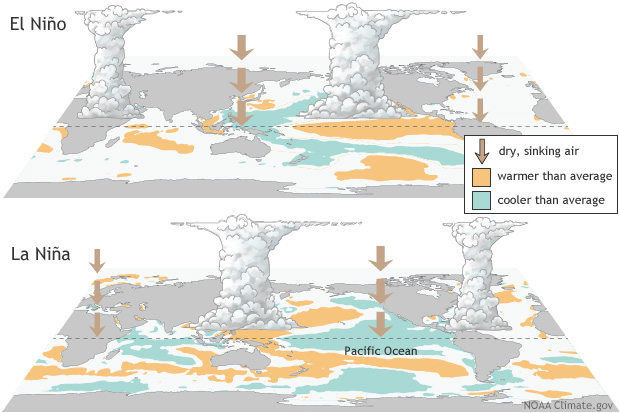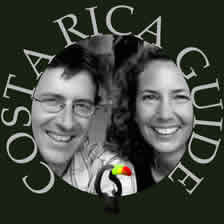NOTE: the 2023/24 El Niño ended in mid-April and there’s a 85% chance that La Niña will develop by August. Details from U.S. NOAA
Warm water in the Pacific Ocean influences weather patterns around the world in a phenomenon called El Niño while cool water and the associated weather patterns are referred to as La Niña. How it happens and the worldwide impacts are explained in the video below from the U.S. National Oceanic and Atmospheric Administration (NOAA) and in an excellent article on climate.gov.
Weather Impacts in Costa Rica
El Niño has different impacts in different geographical regions. In Costa Rica it is typically associated with drier weather especially on the Pacific side of the country. El Niño was partially responsible for a severe drought from 2015 through 2016.
La Niña typically has the opposite effect in Costa Rica increasing rainfall slightly on the Pacific side and sometimes drying out the Caribbean. La Niña was partially responsible for flooding in 2017.
ENSO has the biggest impacts in Costa Rica when warming reinforces the dry season patterns January through April and reduces rainfall during the rainy season in June through December.

La Nada
La Nada or “the Nothing” is a colloquial term for ENSO – Neutral (El Niño Southern Oscillation -Neutral) when neither an El Niño nor La Niña sea surface temperature or weather pattern dominates.
While El Niño and La Niña increase the predictability of weather La Nada is mostly about unpredictability. You might think that since El Niño typically dries it out and La Niña brings more rain that La Nada would mean just average weather. Often it does but nearly as often the climate is extremely wet or dry in La Nada years but it’s not consistent.
It’s also difficult to predict very far out (more than a couple of months) whether a La Nada will persist or occur.
Sometimes La Nada isn’t even self consistent. When the warm or cool water currents fail to produce the expected Niño/Niña climate results meteorologists refer to it as a La Nada.
Predicting the El Niño/Southern Oscillation

We’ve been watching the ENSO (El Niño/Southern Oscillation) maps and predictions as long as we’ve been trying to guess what the weather will be like when we travel in Costa Rica – in other words 25 years. The easiest to understand and most reliable information we’ve found for long term forecasts is from The International Research Institute for Climate and Society – Earth Institute, Columbia University – El Nino Predictor
